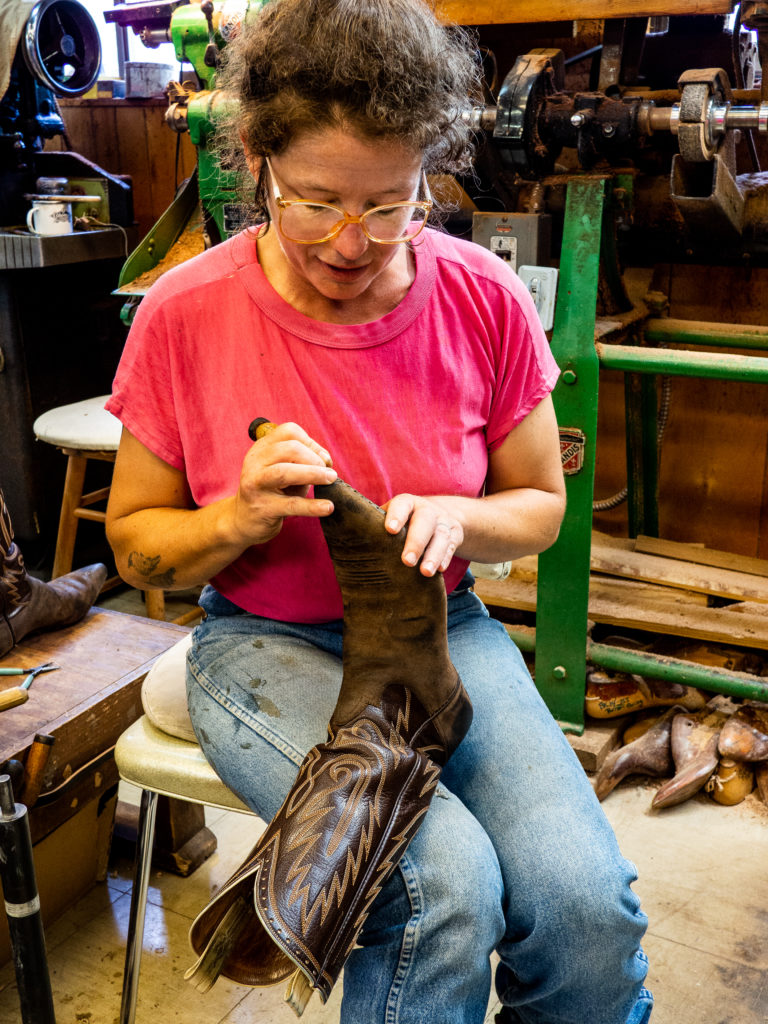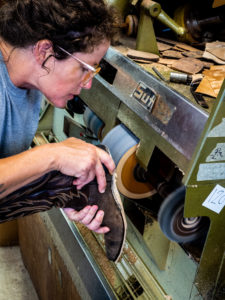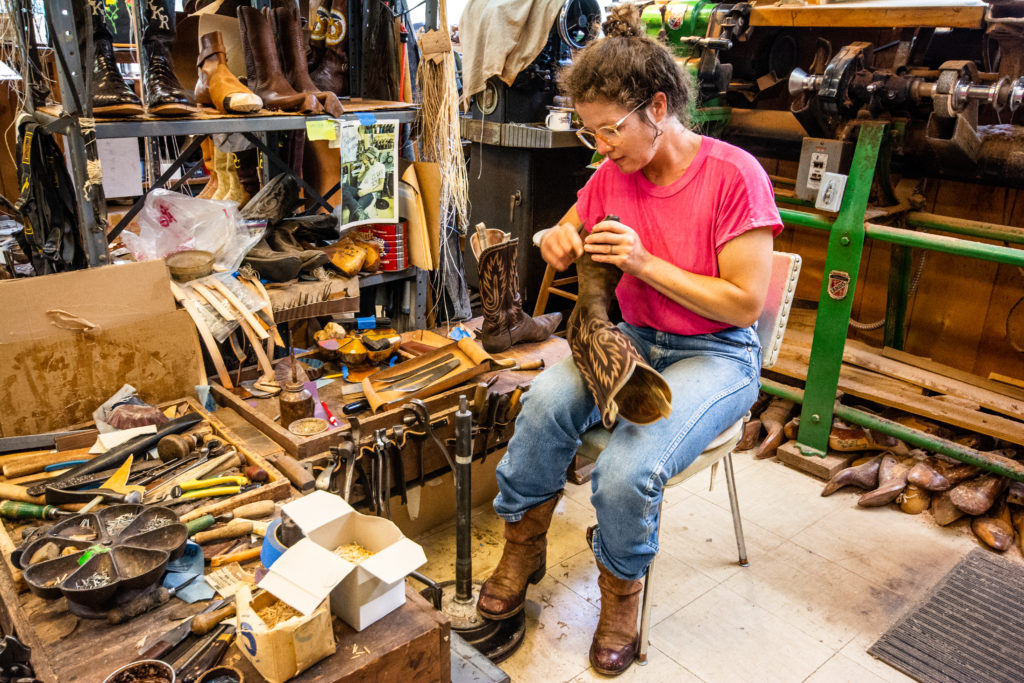
What inspired you to become a leatherworker?
As a kid Dad would, in my mind, “be good” when he had a new roll of natural hide. I felt like that was the way to be. Good. So many things to make, so many things then to be used efficiently. Start your own fire.
Who were and are your teachers? What has it been like to learn from them?
My Dad is my first teacher. He fashioned stuff for function over fashion. To my great satisfaction, he made me chaps for riding bulls. He has always had a steadfast way of judgement in craftsmanship. Something being fashioned well aesthetically and its function unquestionable is number one. My second teacher is Lee Miller. He fashions and constructs cowboy boots. Wow! There are many variables in boot making such as the type of hide due to time of wear. Celebratory or work? Both? He generates a last based on his measurements, a reproduction of two feet as like or unlike each other as they may be. I feel like the lucky card drawn. Both gentleman have taught me how to make form function.
How would you describe your experience learning and practicing a traditional craft?
I like the truth of “what works, works” This is a bespoke craft. At best equalizing customization in numbers per measurements and visual likability. I like that some  things are nothing more than just that. Make it or break it! Other things are conducive to various contributions.
things are nothing more than just that. Make it or break it! Other things are conducive to various contributions.
What is the best advice that you have gotten about leatherworking or traditional craft?
Most importantly, when a voice in your head says, “Oh shit! If I would have done this first it wouldn’t have ruined that.” Understanding the order of steps is advantageous.
How do you plan to perpetuate traditional craft into the future?
I like to perpetuate what works. Gaining an understanding of a medium per how its treated shows its usability or lack thereof. A head space of work-ability and nice visibility equal 100%.

The Cowboy Bootmakers. Memories and photos collected by Dana Perrotti, 2019.

